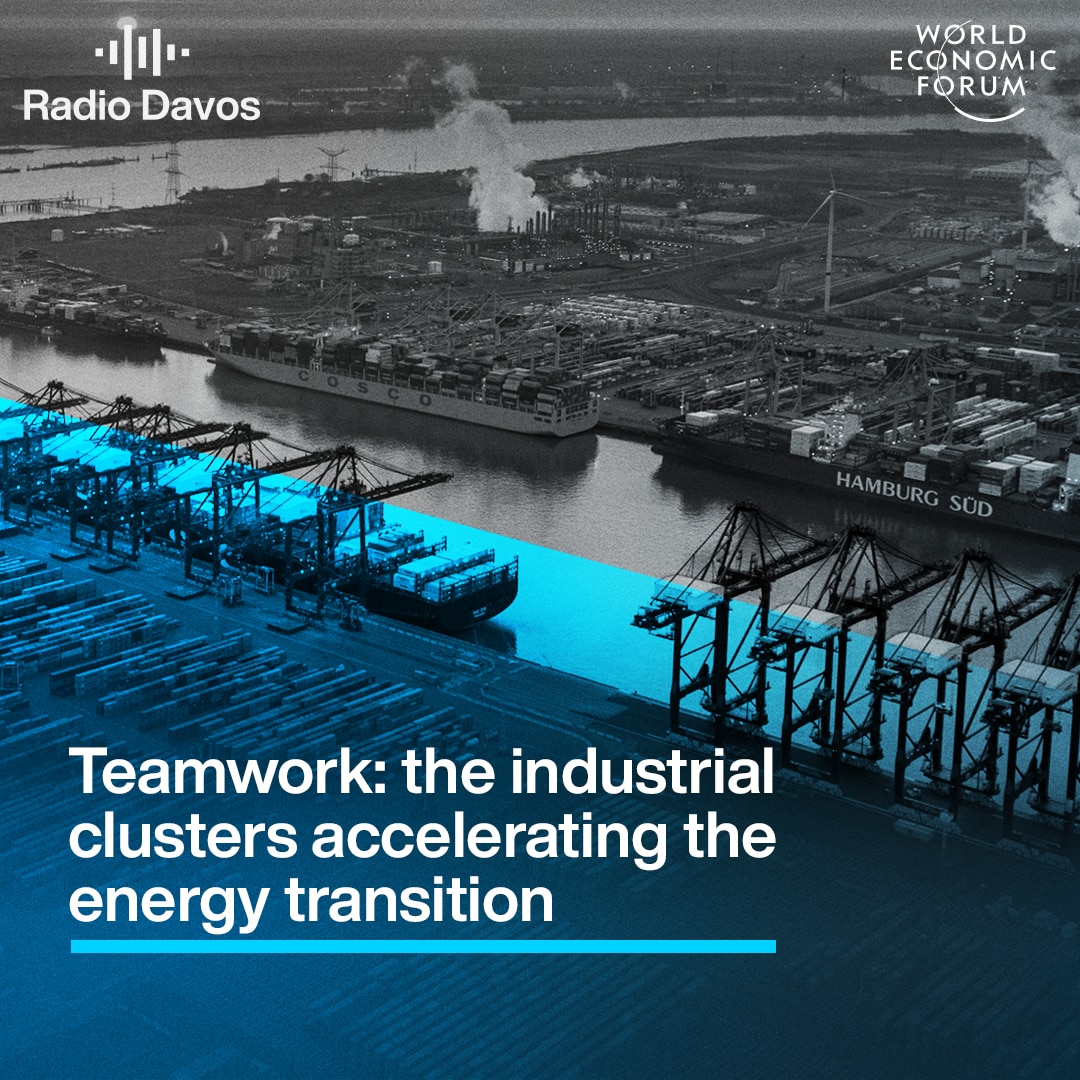Charting the course: How the shipping industry is adapting to tensions in the Red Sea

A US military ship transits the Suez Canal in the Red Sea in October 2023.
Image: REUTERS
Stay up to date:
Logistics
- The Suez Canal and the Red Sea channel approximately 30% of the world's container traffic and facilitate the annual movement of over $1 trillion.
- Houthi forces in Yemen have attacked at least 33 ships in the Red Sea, disrupting global shipping.
- This incident highlights the need for resilience in supply chains, particularly in the operations of shipping firms.
The Red Sea has emerged as a key focal point of geopolitical tension. Houthi militants in Yemen are employing sophisticated weaponry, including hijacks, ballistic missiles, anti-cruise missiles and drones to target international shipping routes.
These attacks, ostensibly in support of Hamas against Israel, began on 19 November 2023, with the hijacking of the Galaxy Leader cargo vessel by Houthi forces. This act of piracy redirected the vessel to Hodeidah port in Yemen, leading to the ongoing detainment of its crew.
Since the initial incident, reports from the UK Maritime Trade Operations indicate that over 33 vessels have been assaulted in the region, with 16 experiencing direct hits from missiles or drones. These incidents have significantly disrupted global trade, underscoring the strategic importance of the Red Sea as a critical maritime corridor.
International response and operational challenges
In response to escalating tensions, the United States and the United Kingdom launched Operation Prosperity Guardian on 18 December 2023, a strategic initiative designed to secure maritime navigation and safeguard trade flows. This move was further bolstered by the European Union's launch of Operation Aspis on 19 February 2024, demonstrating a unified international commitment to restoring regional stability. Despite these concerted efforts, several challenges loom large:
- Allied forces have conducted targeted aerial and naval strikes against Houthi military installations in Yemen, attempting to quell the threat to maritime security. Nonetheless, these measures have yet to halt the Houthi's maritime assaults.
- The Houthis' ability to execute precise attacks on vessels indicates their access to sophisticated tracking technology, enhancing their capability to disrupt shipping with alarming accuracy.
- The Bab el-Mandeb Strait, a vital chokepoint in global shipping, remains acutely vulnerable. Though increased military presence might reduce the risk of attacks, it cannot guarantee the pre-crisis level of security for passing vessels.
Economic ripple effects
The Suez Canal and the Red Sea channel approximately 30% of the world's container traffic and facilitate the annual movement of merchandise valued at over $1 trillion. Disruptions here reverberate across the global economic landscape, underscoring the interconnected nature of international trade and its susceptibility to geopolitical tensions.
The emerging threat landscape has compelled major shipping conglomerates to navigate around the Cape of Good Hope, introducing delays of 1-3 weeks to standard transit times. This strategic shift not only amplifies operational expenditures for shipping entities and logistics facilitators but also burdens companies reliant on these maritime avenues with escalated inventory and transport costs. Such developments harbour the potential to instigate a fresh cycle of global inflation, impacting consumer prices and economic stability worldwide.
This recalibration of shipping routes exacerbates the issue of capacity within the ocean freight sector, as vessels now require extended durations to complete round trips and prepare for subsequent cargo loads. There has been a contraction in available market capacity, a phenomenon not isolated to the Red Sea but also influenced by the drought situation in the Panama Canal and the cyclical effect of the Chinese New Year. These dynamics have precipitated noticeable capacity reductions across pivotal trade corridors: Transpacific routes to North America's East and West Coasts have registered decreases of 7.5% and 6.9%, respectively, while the Asia-North Europe trade lane has encountered a contraction of 4.9%.

The necessity to divert, coupled with the overarching crisis, has exerted upward pressure on ocean freight rates, primarily due to escalating operational costs. Xeneta's analysis underscores a significant surge in shipping rates, particularly affecting routes from the Far East to the Mediterranean and Northern Europe. These routes have witnessed a near-tripling in costs since 1 December 2023. This steep ascent in freight rates illustrates the direct consequences of geopolitical tensions on the logistics sector, hinting at broader implications for global trade networks and economic resilience.

These developments accentuate the intricate dependencies within global supply chains and the pivotal role of strategic maritime corridors in maintaining economic equilibrium.
As the situation unfolds, the agility and adaptability of the shipping industry, coupled with coherent international cooperation, will be paramount in navigating the complexities of this crisis and mitigating its impact on the global economic fabric.
Preparing for prolonged impact
The repercussions for businesses amid this crisis will be determined by the intricacies of their supply chain strategies, including the selection of shipping routes, choice of carriers and the flexibility to adapt operational frameworks.
A notable example is the detour around the Cape of Good Hope, which increases the distance from Shanghai to Rotterdam by 3,500 nautical miles, and from Jebel Ali to Port Said by 8,500 nautical miles. When vessels operate at a speed of 13 knots per hour, the Shanghai to Rotterdam journey, inclusive of the 3,500 nautical mile detour, will prolong the transit time to over 44 days, whereas maintaining a speed of 17 knots per hour could keep the duration to 33 days, aligning more closely with the original transit time without the detour. However, higher speeds result in increased fuel consumption and subsequent higher emissions charges, highlighting a complex trade-off between speed, cost and environmental impact.
A nuanced understanding of the specific implications for each business is essential, particularly in terms of transit time and cost, which are vital components of inventory management and overall supply chain expenditures. Identifying which shipments or goods are most susceptible to delays or additional costs due to the detour is crucial for formulating effective mitigation strategies.
Shipping lines have embraced a diverse range of priorities, strategies and solutions to soften the Red Sea crisis's impact on global supply chains. Maersk has adjusted the speeds of its Asia-Europe vessels and fine-tuned port call schedules, a move aimed at alleviating capacity concerns while ensuring the integrity of their service network remains intact. Moreover, in response to the growing demand for alternative logistical options from the business community, Maersk has introduced innovative solutions such as truck bridge services and sea-air transport options. These initiatives are designed to assist customers in navigating the challenges of extended transit times, showcasing Maersk's commitment to providing flexible and efficient solutions amid ongoing maritime disruptions.

The imperative of resilience
The Red Sea crisis has highlighted the critical need for resilience within global supply chains. To navigate this turbulent landscape, companies must excel in real-time monitoring of global events, grasp the implications of these developments and rapidly deploy alternative operational strategies. Cultivating such resilience serves as a bulwark against imminent disruptions and fortifies long-term business sustainability in a global marketplace characterized by its increasing unpredictability.
The acceleration of trade digitalization and supply chain data visibility makes integrated end-to-end solutions with predictive and proactive management possible. It is time to plan for the unplannable — and to do it well.
Accept our marketing cookies to access this content.
These cookies are currently disabled in your browser.
Don't miss any update on this topic
Create a free account and access your personalized content collection with our latest publications and analyses.
License and Republishing
World Economic Forum articles may be republished in accordance with the Creative Commons Attribution-NonCommercial-NoDerivatives 4.0 International Public License, and in accordance with our Terms of Use.
The views expressed in this article are those of the author alone and not the World Economic Forum.
Forum Stories newsletter
Bringing you weekly curated insights and analysis on the global issues that matter.
More on Supply Chains and TransportationSee all
Dominik Metzger
November 3, 2025
Ian Cronin, Suketu Gandhi, Mourad Tamoud and Kathy Wengel
October 22, 2025
Rory Jacobson
October 20, 2025
Leonor Nieto, Niklas Jäschke and Shirly Piperno
October 1, 2025





